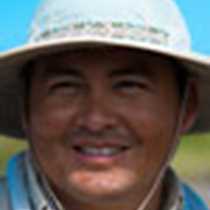Genovesa Island (Tower)
Today we arrived with a nice sunrise at the island of the birds. At the same time flocks of red-footed boobies were heading to their feeding areas, which are located at the northeastern side of the Galápagos archipelago. Our early morning outing began with kayaking along the cliff of an old collapsed caldera. We spotted different species of seabirds such as frigate birds, red-billed tropicbirds, and Galápagos shearwaters. Furthermore, because the ocean was very calm, we approached the rocks for a close encounter with one of the marine mammals that was hunted a century ago, the Galapagos Fur Seal that inhabits the rocky cliffs of the island. Our early excursion ended with a delightful breakfast, which provided us enough energy to continue with the rest of the adventure throughout the day.
At Darwin Bay we took a walk along of a tidal channel. The low tide helps a lot. We were able to access restricted areas where we found yellow night crown herons and swallow-tailed gulls with their chick. Moreover, frigate birds, sharp-beak finches also known as “vampires” and mockingbird where found into the saltbushes. Afterward, we headed back to National Geographic Islander in order to go deep water snorkeling. The underwater realm was ready to offer us a wide variety of fish. For example, parrotfish, wrasse, indo pacific tuna, moorish idol and few more species of fish from the Indo-Pacific where seen in the calm warm water of Darwin Bay. An interesting morning in one of the most pristine island in Galápagos paid off.
Our afternoon excursion was very pleasant. We walked through incense trees, and yellow cordia. We spotted the only species of booby that builds its nests in trees, red-footed boobies. In addition, we spotted several species of Darwin finches, such as the large ground finch, warbler finch, and Galápagos dove. At the end of the forest we found an unblemished area with a picturesque volcanic landscape. Because of the volcanic flows with a lot crevices and small lava tubes, we often see large flock of storm petrels that like to soar along the lava field. We were standing enjoining the astonishing volcanic landscape when a short-ear owl flew above of us. This raptor has a diurnal behavior on Genovesa Island because of the availability of food. After so much fun in our nature quest, we gave a minute of silence to those species whose extinction was caused by humans. Also, it made us think about how small we are on this planet and how the wildlife here battled to reach oceanic islands and establish in a wild new environment. Listening to Mother Nature through the sounds of the birds, wind and breaking waves made this magical day with a great ending.




